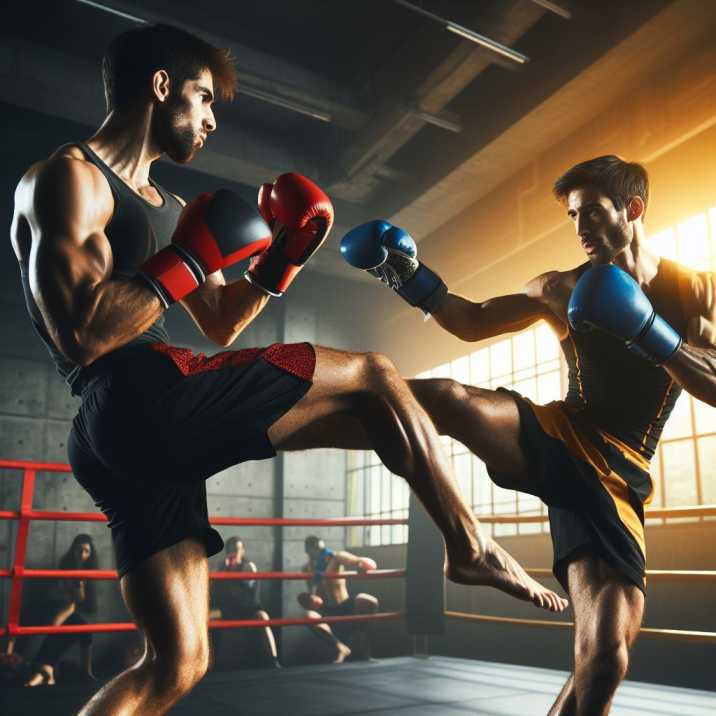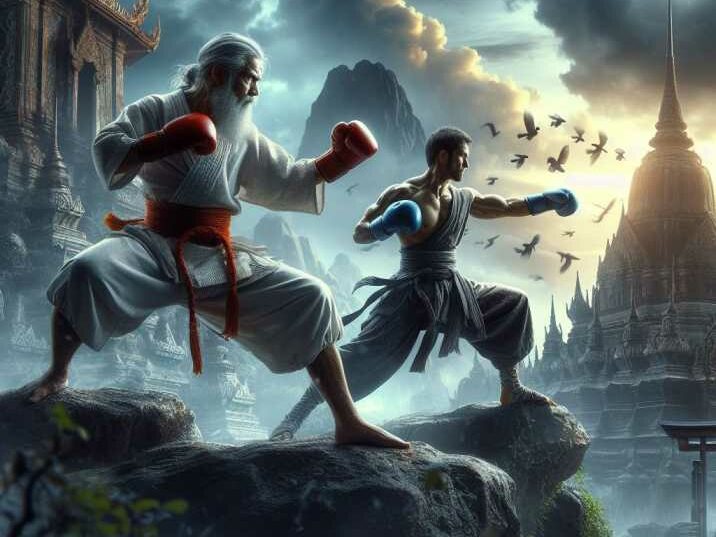Introduction:
Table of Contents
Kickboxing Origins
Kickboxing, a dynamic and powerful combat sport, has gained global popularity over the years. In this exploration, we’ll embark on a journey to unravel the mysteries surrounding its inception. “When was kickboxing invented?” is a question kickboxing origins that opens the gateway to a fascinating history filled with cultural influences, martial arts evolution, and sporting innovation.

The Ancient Roots:
The kickboxing origins can be traced back to ancient civilizations where various forms of martial arts were practiced. In Asia, particularly in China and India, records show early forms of kickboxing techniques being integrated into traditional combat systems. These ancient arts laid the groundwork for what would eventually evolve into modern kickboxing.
Evolution in Asia:
As we delve into the historical tapestry of kickboxing, it’s essential to highlight its evolution in Asia. During the early centuries, martial arts practitioners in Thailand, known as Muay Boran fighters, incorporated kicking and striking techniques into their combat repertoire. This fusion of techniques became the precursor to Muay Thai, a discipline that heavily influenced the development of kickboxing.
Japanese Influence:
The 1960s marked a significant period for kickboxing, with Japan playing a pivotal role in its modernization. Osamu Noguchi, a Japanese karate promoter, organized the first kickboxing event in 1966, blending karate kicks with Western-style boxing punches. This innovative fusion captivated audiences, laying the foundation for the birth of contemporary kickboxing.
Rapid Global Spread:
The 1970s witnessed the rapid global spread of kickboxing as it transcended cultural boundaries. Promoters organized international competitions, attracting fighters from diverse martial arts backgrounds. This era saw the establishment of official rulesets, weight classes, and governing bodies, solidifying kickboxing as a distinct and globally recognized sport.
The Birth of Professional Kickboxing:
By the 1980s, kickboxing had firmly established itself as a professional sport. Organizations like K-1 emerged, featuring high-profile tournaments that showcased top-tier talent from around the world. The electrifying atmosphere of these events contributed to kickboxing’s rise in popularity, drawing in fans and athletes alike.
Challenges and Innovations:
Despite its success, kickboxing faced challenges in different regions, adapting to local preferences and regulations. Innovations such as Full Contact, Low Kick, and K-1 rulesets emerged, diversifying the sport and catering to a broader audience. These adaptations played a crucial role in kickboxing’s resilience and continued evolution.
Contemporary Kickboxing:
Today, kickboxing stands as a global phenomenon, with thriving communities and championships spanning continents. Its journey from ancient martial arts techniques to a mainstream sport reflects the resilience of human creativity and the universal appeal of combat sports. As we continue to witness new developments in techniques and strategies, the question of “when was kickboxing invented” remains a testament to its rich and ever-evolving history.

Conclusion:
In conclusion, the journey to discover when kickboxing origins was invented unveils a narrative deeply rooted in ancient martial arts, shaped by cultural influences, and propelled into the modern era through innovation and globalization. The sport’s ability to adapt, diversify, and captivate audiences worldwide underscores its enduring appeal. As we celebrate the rich history of kickboxing, we anticipate its continued evolution and the emergence of new chapters in the ever-expanding story of this dynamic combat sport.
FAQs: kickboxing origins
- Q: When was kickboxing officially recognized as a sport? A: Kickboxing gained official recognition as a sport in the 1970s with the establishment of governing bodies and standardized rulesets.
- Q: Who is considered the father of modern kickboxing? A: Osamu Noguchi, a Japanese karate promoter, is often credited as the key figure in the development of modern kickboxing.
- Q: How did kickboxing evolve from ancient martial arts? A: Kickboxing evolved from ancient martial arts through the integration of kicking and striking techniques, particularly influenced by Muay Thai and traditional Asian combat systems.
- Q: What are the major rulesets in contemporary kickboxing? A: Contemporary kickboxing features various rulesets, including Full Contact, Low Kick, and K-1, each with its unique set of regulations.
- Q: Which country played a crucial role in kickboxing’s global spread? A: Japan played a pivotal role in kickboxing’s global spread, organizing the first kickboxing event in 1966 and contributing to its modernization.
- Q: How did kickboxing adapt to different cultural preferences? A: Kickboxing adapted to different cultural preferences by diversifying rulesets and incorporating innovations to cater to a broader audience.
- Q: Are there different weight classes in professional kickboxing? A: Yes, professional kickboxing features various weight classes, allowing fair competition among athletes of similar size and skill.
- Q: What role did Muay Boran play in the development of kickboxing? A: Muay Boran, practiced in Thailand, influenced kickboxing by incorporating kicking and striking techniques, serving as a precursor to Muay Thai and modern kickboxing.
- Q: How did kickboxing become a mainstream sport in the 1980s? A: The establishment of organizations like K-1, featuring high-profile tournaments, contributed to kickboxing’s rise in popularity, making it a mainstream sport in the 1980s.
- Q: Is kickboxing still evolving today? A: Yes, kickboxing continues to evolve with ongoing developments in techniques, strategies, and the emergence of new athletes and promotions.
- Q: What are some of the challenges kickboxing faced in its early years? A: Kickboxing faced challenges in adapting to local preferences, regulations, and establishing standardized rules in its early years.
- Q: How has kickboxing contributed to the broader landscape of combat sports? A: Kickboxing has contributed to the broader landscape of combat sports by offering a dynamic and diverse form of competition, influencing other disciplines and captivating a global audience.


